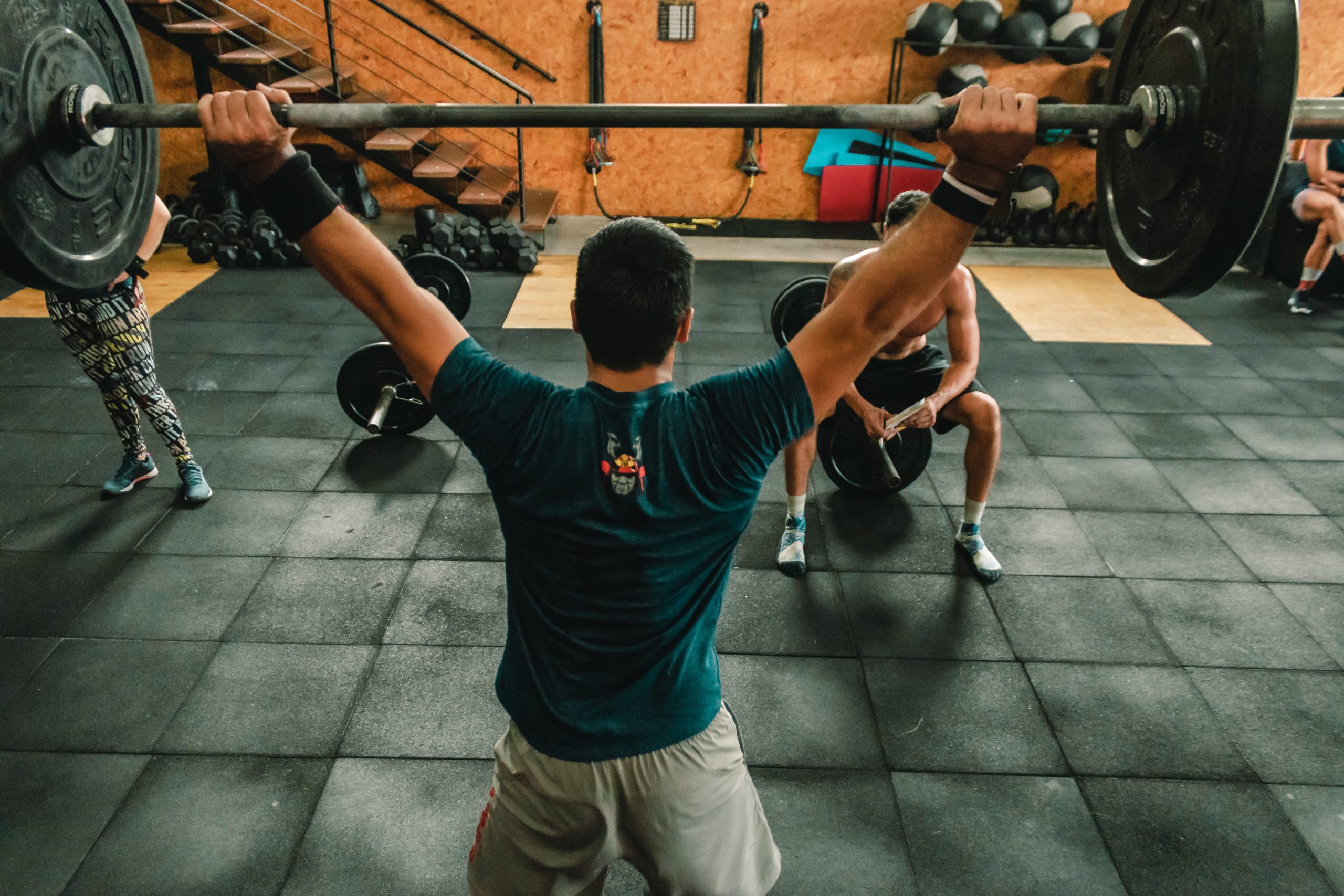6 Ways to Alter Your Resistance Training Exercises
Sports Performance | Strength & ConditioningDr. Andy Galpin
Dr. Andy Galpin is a Professor of Kinesiology at the Center for Sport Performance at California State University, Fullerton. Andy has a Ph.D. in Human Bioenergetics and is the founder and director of the Biochemistry and Molecular Exercise Laboratory. He’s the co-author of Unplugged with Brian Mackenzie and Phil White. In addition, he co-hosts the Body of Knowledge podcast. Learn more at www.andygalpin.com
// Alter Your Resistance Exercises to Change the Training Stimulus
It’s easy to get into a routine in the weight-room, isn’t it?
You do the same resistance training exercises over and over again because they’ve proven to be effective.
Sticking with staple lifts also makes it easier to test yourself and measure your progress over time.
Yet while I don’t advocate randomness for its own sake, sometimes identical exercises day in and day out can make things stale.
Plus, you develop strength, speed, and power only through certain ranges of motion and in the context of that full clean or that ass-to-grass squat if that’s all you’re doing.
It’s also common to reach plateaus that can be hard to get past unless you change things up.
With these challenges in mind, here are 6 exercises to switch things up so that your programming stays fresh, and you become more versatile in your training.

Buy some Bands
My friend and co-conspirator Doug Larson (from Barbell Shrugged) started using bands on our deadlifts several years ago.
Why? Because they alter the shape of the force-velocity curve and introduce an element of instability that forces stabilizing muscles to fire while the big ones are doing the heavy lifting – literally.
As the bands actively pull against you as you progress through the lift, they also introduce a new stability element in the equation that makes the lift more challenging.
You don’t have to only use bands on deadlifts, but can expand them to squats and other exercises, too.
Just make sure you choose bands that are thick enough so that they don’t snap.
Buy some Chains
Another way to make your deadlifts and squats heavier as you move through your range of motion is to incorporate metal chains.
These have a couple of advantages over the banded variation I just mentioned.
First, the cost is less – you can pick up a pair of chains at Lowe’s or Home Depot for around 10 bucks.
Second, the barrier of entry is lower in terms of complexity, as the chains aren’t actively pulling like bands do.
Third, setup is simpler, because all you do is hang one chain over each end of the bar.
Start and finish higher or Lower
In the functional fitness realm, compound lifts performed through full ranges of motion aren’t only a thing, they’re the only thing.
I understand the reasoning here, but sometimes it’s good to give your body a different look at an exercise by expanding or contracting the range of motion.
You can achieve this by starting and/or ending each rep higher or lower than you would during the full exercise.
So for example, perhaps you do deficit deadlifts from blocks three, six, or nine inches high. Or maybe you go the other way and start the lift a few inches into the movement, such as when performing rack pulls (a favorite of Olympic lifting coaches).
Doing so changes the force-velocity curve and can allow you to emphasize a certain training quality – like power – with less fatigue because the distance traveled is less (remember that force x distance = work done).
Tweak the Tempo
There are usually only two speeds in play in the typical gym – fast or slow.
But as my Unplugged co-author Brian Mackenzie likes to say, most people need to work on the gears in between.
Like a versatile mountain bike that allows you to select just the right gear for the terrain, so too should athletes be able to vary the tempo with which they move themselves and their implements.
To alter the tempo, you can change how long the eccentric, concentric, and isometric phases of each rep lasts.
So for example, perhaps in your deadlift you pull the bar two inches off the floor, pause for three seconds, go up another two inches, pause again, and then complete the lift.
This would give you more time under tension. Or maybe for a pullup you mimic Conor McGregor’s approach and go fast on the way up to the bar, and then eliminate or minimize the eccentric portion on the way back down.
Tempo is a knob or lever that allows you to create almost unlimited variation in how each exercise is performed and the adaptation it prompts.
Incorporate external Cues
In the weight room, it’s almost always the athlete who begins and ends their lifts using internal cues – i.e. when they’ve finished their setup, taken a breath, and pre-tensioned with their hands on the bar.
Such preparation and timing allow a lifter to be mentally and physically ready to begin and to generate maximum force.
The only trouble is that if your athletes play one or more sports, their game of choice won’t afford them such luxuries.
The sport or the opponent determines the cues in this case, so there’s no opportunity for the perfect pre-movement sequence. An athlete can have all this strength at their disposal, but only be able to deploy it in ideal, controlled, closed-loop circumstances.
What we need to do is make things more unpredictable and open the loop.
Some coaches use technology to switch their athletes from internal to external cueing, but I prefer the approach of having someone stand behind the person who’s about to commence their set.
When the guy or girl behind them shouts, “Go!” they begin. For certain exercises, like double-unders or agility ladder drills, the athlete would keep moving until their partner yells, “Stop!”
Harness Momentum
A common misconception in strength and conditioning is that you should never swing or bounce your way into the next rep because it’s cheating.
Nonsense! It just depends which qualities you’re trying to develop and why.
If you’re primarily targeting aesthetics and hypertrophy for bodybuilding, then you’re trying to emphasize the role of the muscles in your lifting. In which case, you’re unlikely to use momentum.
But in most other contexts, the goal is different.
When training for a sport, it’s beneficial to learn how to transfer load from the muscles to connective tissues to bone.
In which case, momentum can help you generate and transmit more power. So rather than doing static hinging all the time, perhaps you switch from a barbell to a kettlebell and have your athletes perform kettlebell swings.
Or you have them perform a depth jump or successive bounds rather than a single, maximum effort vertical leap.
The caveat here is that before putting more load on the connective tissues with momentum, you need to prepare them for it. This means starting slowly and progressing gradually to reduce the risk of injury.
READY TO TRY TRAINHEROIC?
Our powerful platform connects coaches and athletes from across the world. Whether you are a coach or trainer looking to provide a better experience for your clients, or you’re an athlete looking for expert programming, click below to get started.
Want more training content?
More coaches and athletes than ever are reading the TrainHeroic blog, and it’s our mission to support them with the best training & coaching content. If you found this article useful, please take a moment to share it on social media, engage with the author, and link to this article on your own blog or any forums you post on.
Be Your Best,
TrainHeroic Content Team
HEROIC SOCIAL
HEROIC SOCIAL
TRAINING LAB
Access the latest articles, reviews, and case studies from the top strength and conditioning minds in the TH Training Lab


